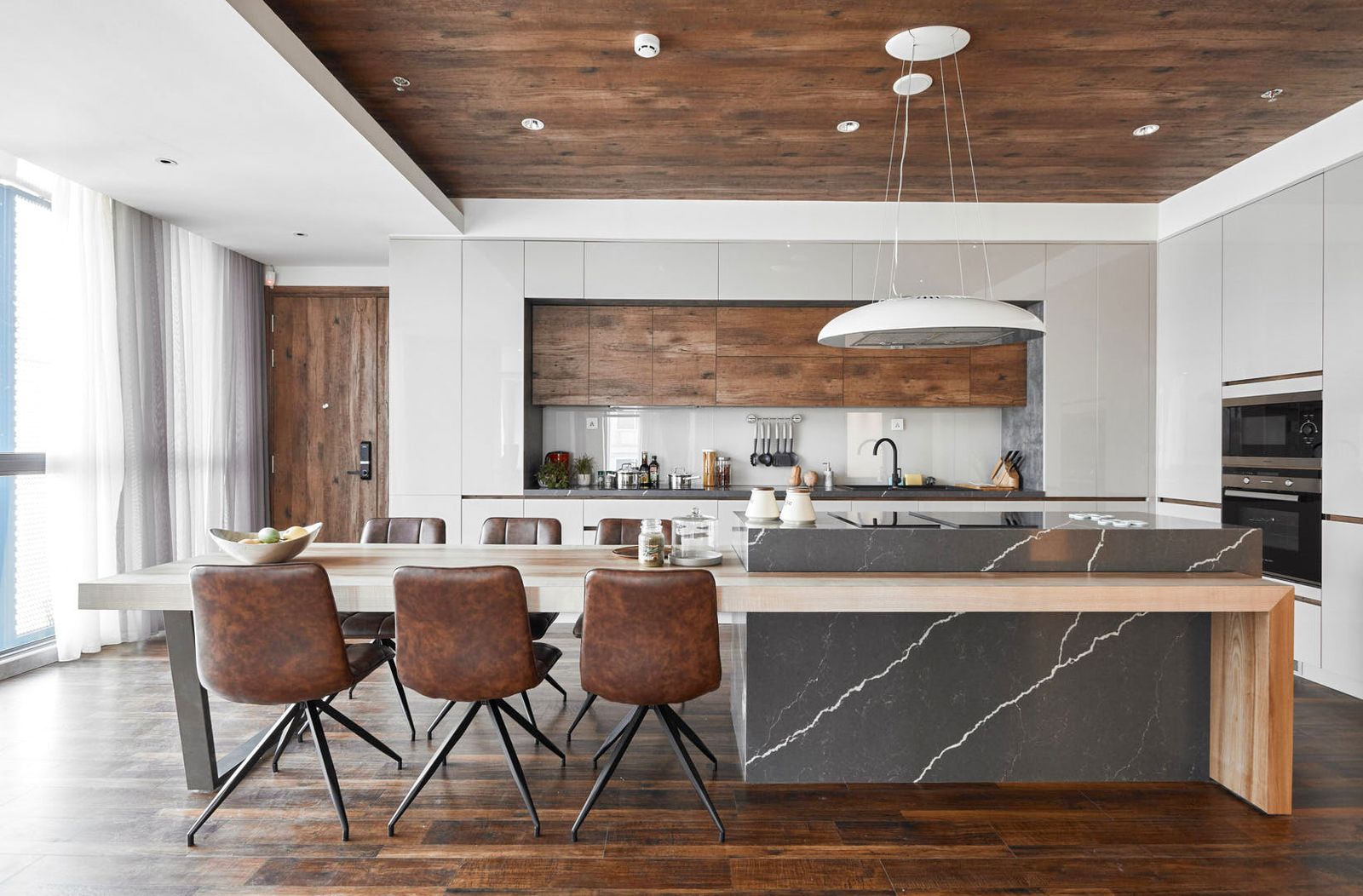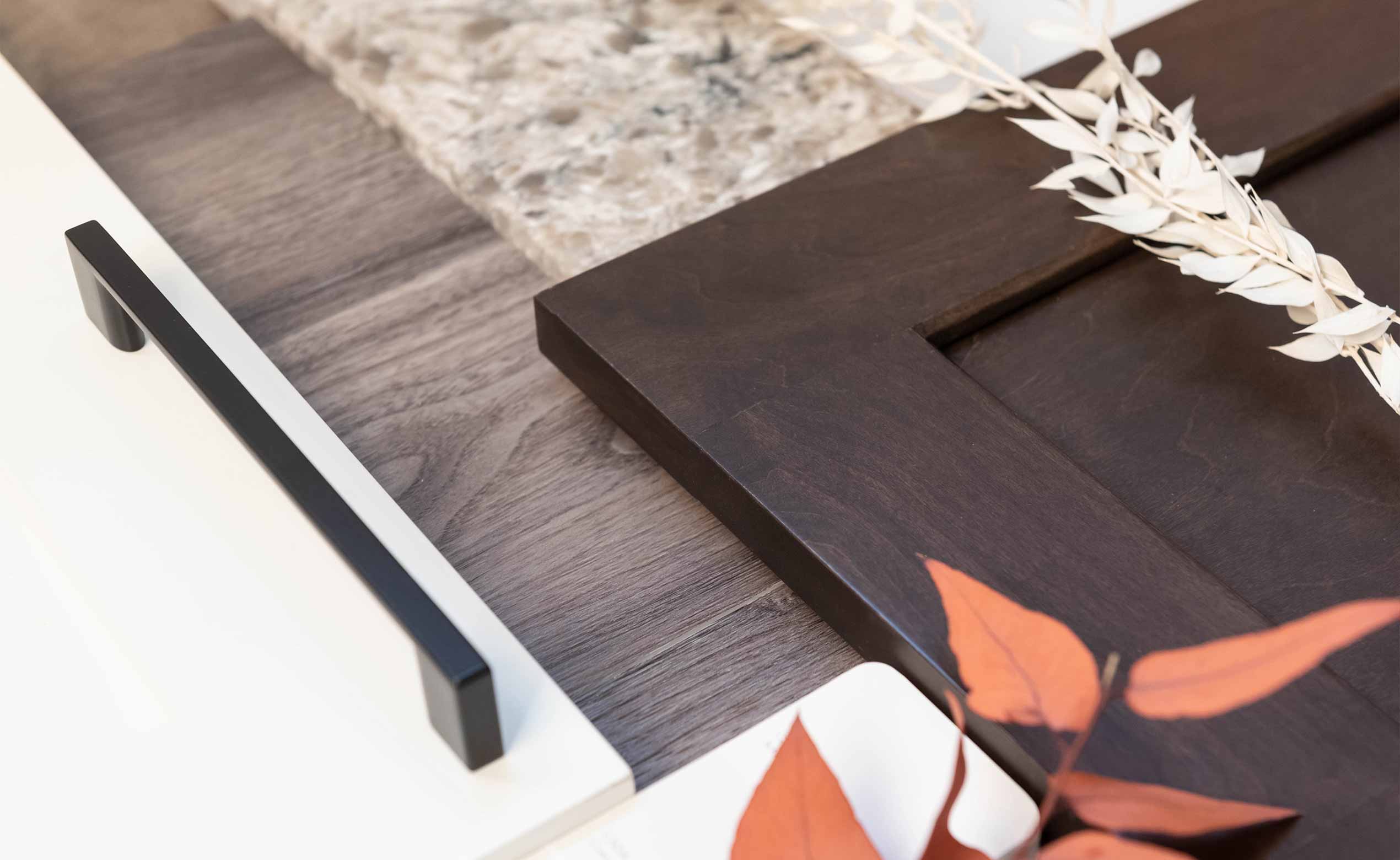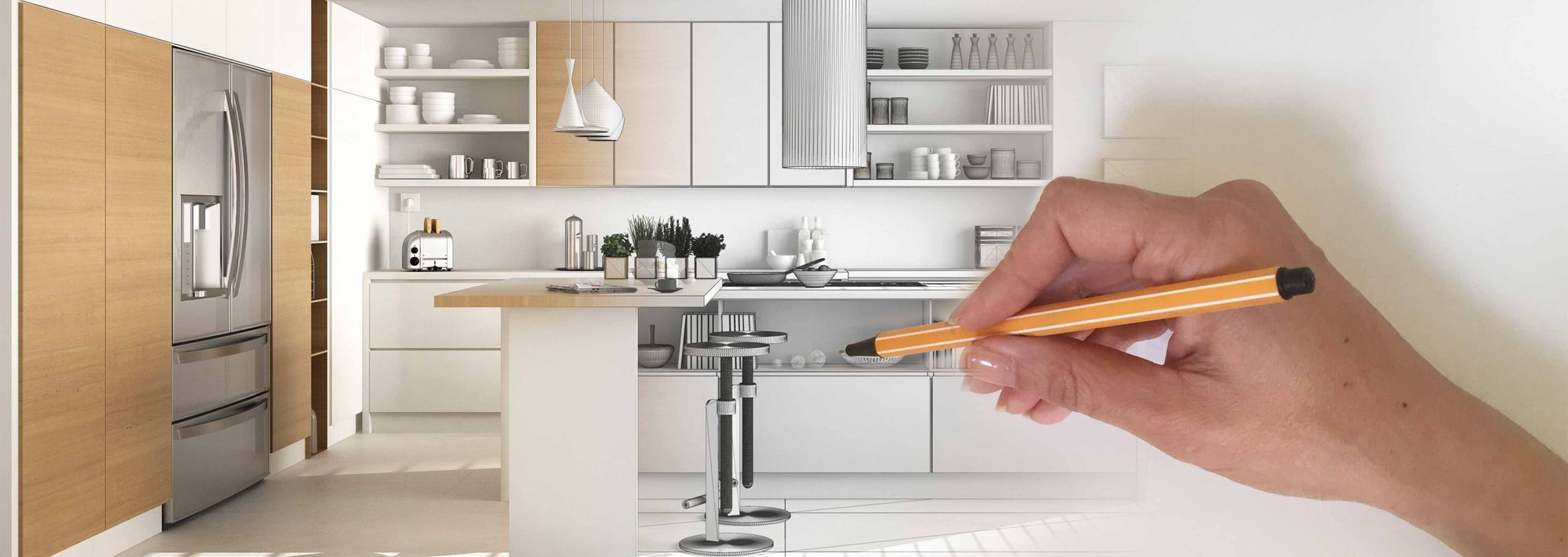What Defines a “High-Quality” Bathroom Vanity?
Not all vanities are built the same, even if they look similar at first glance. A quality vanity should offer:
- Durable, moisture-resistant materials
- Sturdy joinery and smooth drawer function
- Thoughtful storage and design flexibility
- Timeless style that complements your space
Whether you’re outfitting a powder room or a full primary ensuite, investing in a well-made vanity helps the entire room feel more cohesive and functional.
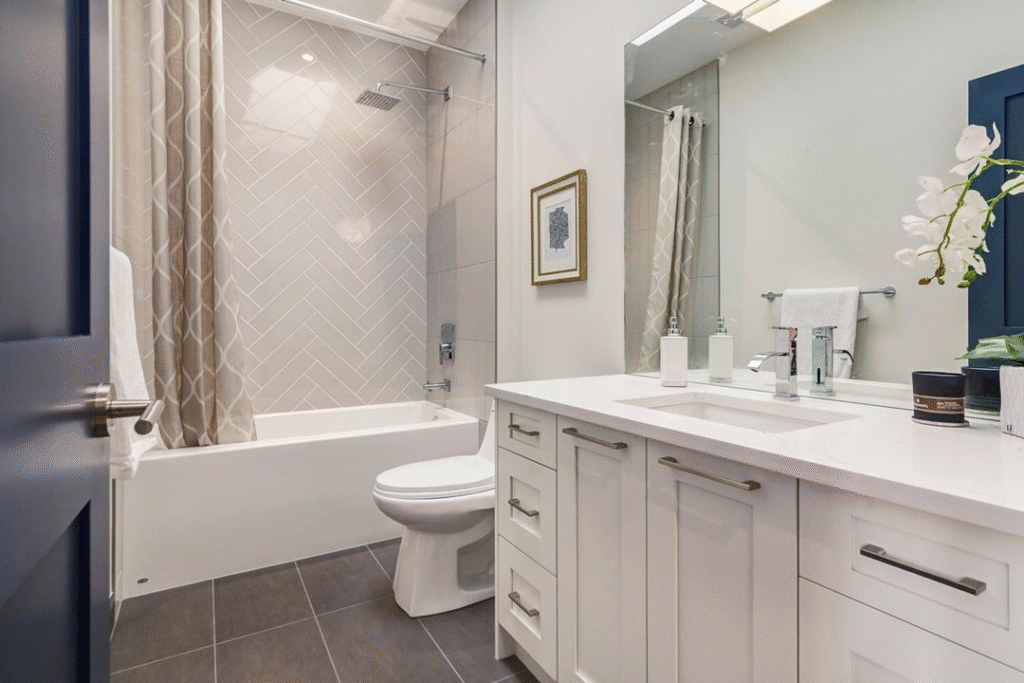
Best Materials for Long-Lasting Bathroom Vanities
Material is one of the biggest indicators of quality. Here’s how the most common options stack up:
Solid Wood (Maple, Oak, Birch)
Strong, long-lasting, and naturally beautiful
Requires sealing or a high-quality finish to resist moisture
Often seen in high-end custom vanities
Best for: long-term value and durability
Plywood (Furniture-Grade)
Made of layered wood veneer, stronger than MDF
Holds screws and hardware well
More moisture-resistant than solid wood when properly finished
Best for: value-conscious homeowners who want quality without going full custom
MDF (Medium-Density Fiberboard)
Smooth and affordable, often used in painted finishes
Less resistant to water and swelling unless properly sealed
Can chip or warp over time in high-moisture settings
Best for: budget-friendly modern designs in low-traffic bathrooms
Particleboard or Pressed Wood
Least durable; not recommended for long-term use
Often found in low-cost vanities with veneer finishes
Prone to swelling, sagging, and delamination
Best for: very temporary or rental spaces
Tip: If you’re unsure what your vanity is made of, ask about the cabinet box material, not just the doors or drawer fronts.
Key Features That Set High-Quality Vanities Apart
Beyond materials, here are the construction and design details that signal real quality:
1. Dovetail Drawer Joints
Drawers with dovetail joints are stronger and less likely to come apart over time. They’re a hallmark of better craftsmanship compared to glued or stapled construction.
2. Soft-Close Hinges and Drawer Glides
High-quality vanities offer soft-close functionality for a quieter, smoother experience that protects the cabinet over time.
3. Full-Extension Drawers
Being able to access the entire drawer (not just the front half) is both a design and usability upgrade—especially in small bathrooms.
4. Moisture-Resistant Finishes
Look for UV-cured polyurethane finishes or high-quality lacquer. These help protect against daily splashes, steam, and cleaning products.
5. Integrated or Customizable Sinks
Premium vanities often come with or support seamless sinks made from quartz, marble, or solid surface materials. These not only look sleek but are easier to clean and maintain.
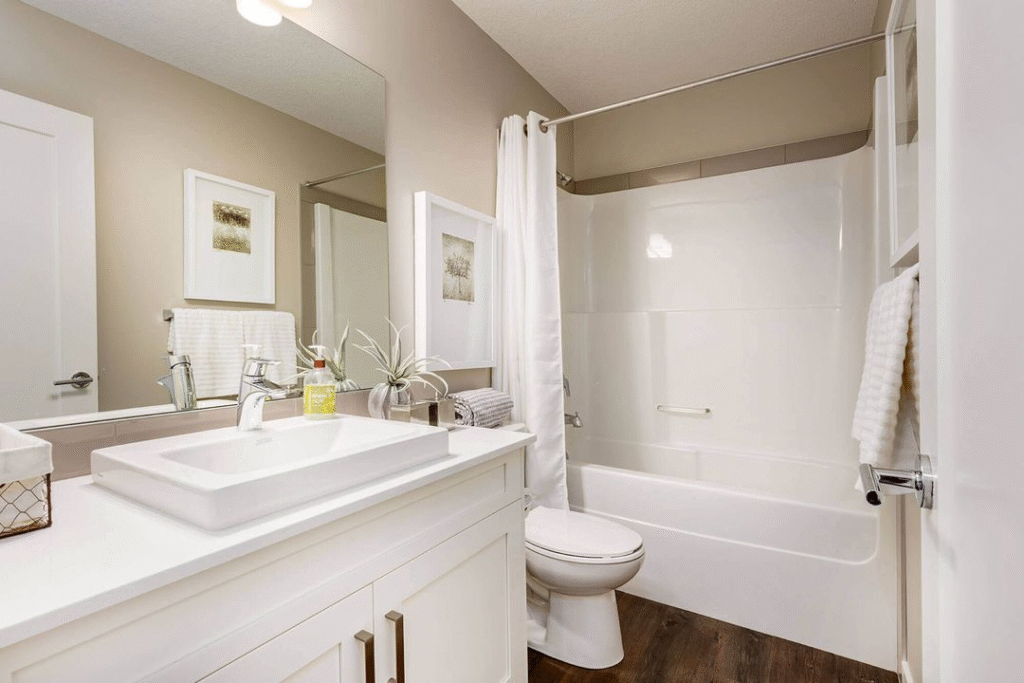
Vanity Styles That Balance Quality and Design
Still wondering what are the best quality bathroom vanities for your home? It depends on the look you’re going for. Here are three popular categories:
Transitional Vanities
Transitional vanities blend classic design elements with clean, modern lines. This style offers long-term appeal and is ideal for homeowners thinking about future resale value. These vanities are often built from solid wood or high-quality plywood and paired with stone or quartz countertops for lasting durability.
Modern Floating Vanities
Modern floating vanities are wall-mounted to create a clean, minimalist look while saving valuable floor space. They do require secure installation and may need plumbing adjustments, especially in older homes. For best results, they should be built from high-quality engineered materials that can resist warping in humid bathroom environments.
Thinking about a floating vanity? Learn how to seamlessly incorporate this sleek, space-saving style in our guide on how to integrate floating vanity cabinets into your bathroom.
Furniture-Style Vanities
Furniture-style vanities are designed to resemble standalone pieces, often featuring legs or decorative toe kicks that add character. They bring warmth and charm to vintage-inspired or eclectic bathrooms, making the space feel more personalized. To ensure durability, look for vanities with solid joinery and high-quality hardware that can withstand daily use.
Need help narrowing it down? Our Calgary-based team can walk you through available styles, materials, and finishes that fit your design goals and space.
How to Choose the Right Vanity for Your Bathroom
Every bathroom is different, but here are the most important factors to consider when choosing your vanity:
Space and Layout
Measure carefully. Make sure there’s enough clearance for doors, drawers, and traffic flow. In tight spaces, wall-mounted or narrower vanities may work better.
Plumbing Compatibility
If you’re not moving plumbing, you’ll need a vanity that aligns with existing drain and water line locations.
Storage Needs
Drawers, open shelves, and vertical storage all matter depending on how much you need to tuck away, especially in shared bathrooms.
Countertop Material
Look for quartz or solid surface tops for maximum durability and low maintenance. Laminate is less expensive, but also less long-lasting.
If you’re also upgrading countertops elsewhere in your home, explore our guide to countertop surface types to compare materials.
What About Custom vs. Pre-Built?
Custom vanities offer maximum flexibility in sizing, layout, and finishes, often with solid wood or premium plywood construction. These are ideal if you’re matching existing millwork or working around unique space constraints.
Thinking about a personalized upgrade? Discover what matters most in our guide on what to consider when creating custom bathroom vanities to ensure the perfect fit for your space and style.
Pre-built or semi-custom vanities offer faster turnaround and lower costs while still providing excellent quality if you choose reputable brands and materials. This route is great for most standard-sized bathrooms.
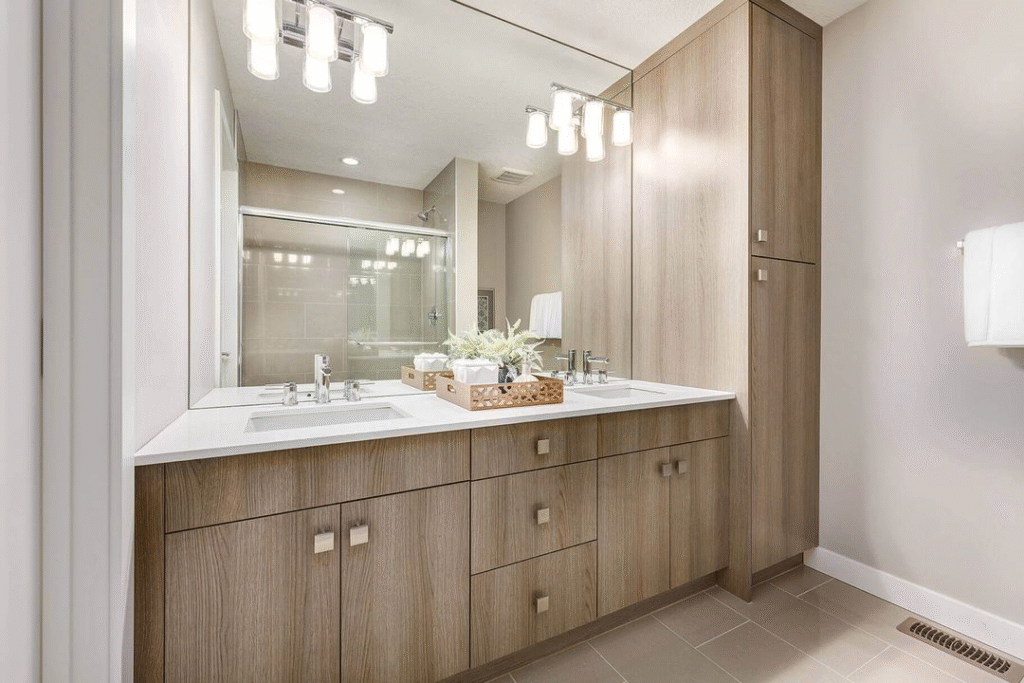
So, what are the best quality bathroom vanities? The ones that combine strong, moisture-resistant materials with thoughtful craftsmanship and a style that fits your space, now and for years to come.
Whether you’re remodeling a powder room or upgrading your ensuite, the right vanity can completely transform the look and functionality of your bathroom.
Not sure if it’s time for an upgrade? Our guide on 7 signs that show your bathroom needs renovation can help you spot the key indicators before small issues turn into big problems.
If you’re planning a renovation in Calgary, our team at Zen Living can help you explore high-quality vanity options, finishes, and countertop pairings tailored to your needs.
Request a free design consultation today and let’s build your perfect bathroom, beautiful, durable, and built to last.
Related articles: How Much Does It Cost To Renovate A Small Bathroom In Calgary? | How to Choose Your Bathroom Vanity Height?


